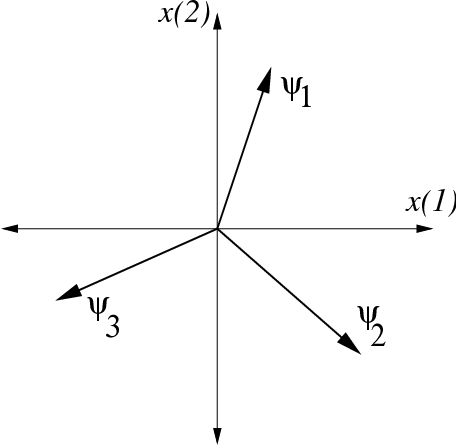| << Chapter < Page | Chapter >> Page > |
For a wide variety of signal processing applications (including analysis, compression, noise removal, and so on) it is useful toconsider the representation of a signal in terms of some dictionary [link] . In general, a dictionary issimply a collection of elements drawn from the signal space whose linear combinations can be used to represent or approximatesignals.
Considering, for example, signals in , we may collect and represent the elements of the dictionary as an matrix, which we also denote as . From this dictionary, a signal can be constructed as a linear combination of the elements (columns) of . We write
Dictionaries appear in a variety of settings. The most common may be the basis, in which case has exactly linearly independent columns, and each signal has a unique set of expansion coefficients . The orthonormal basis (where the columns are normalized and orthogonal) is also ofparticular interest, as the unique set of expansion coefficients can be obtained as the inner products of against the columns of . That is, , which gives us the expansion
We also have that .
Frames are another special type of dictionary [link] . A dictionary is a frame if there exist numbers and , such that, for any signal

The standard basis for representing a signal is the canonical (or “spike”) basis. In , this corresponds to a dictionary (the identity matrix). When expressed in the canonical basis, signals are often said tobe in the “time domain.”
The frequency domain provides one alternative representation to the time domain. The Fourier series and discrete Fourier transformare obtained by letting contain complex exponentials and allowing the expansion coefficients to be complex as well. (Such a dictionary can be used to represent real or complexsignals.) A related “harmonic” transform to express signals in is the discrete cosine transform (DCT), in which contains real-valued, approximately sinusoidal functions and the coefficients are real-valued as well.

Notification Switch
Would you like to follow the 'Concise signal models' conversation and receive update notifications?